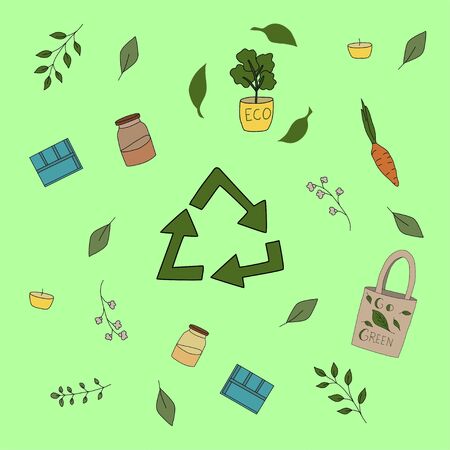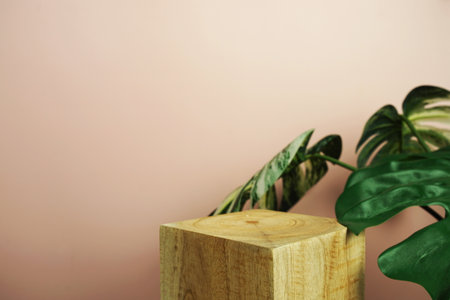Introduction to Eco-Friendly Wallpapers
Eco-friendly wallpapers are rapidly gaining traction in the UK’s interior design market as both homeowners and commercial spaces look for sustainable solutions that minimise environmental impact. But what exactly makes a wallpaper ‘eco-friendly’? Typically, these products are crafted from renewable or recycled materials, use water-based inks, and avoid harmful chemicals such as PVC or volatile organic compounds (VOCs). The growing focus on sustainability in British homes is not just a trend but a response to increasing awareness about climate change and resource depletion. As UK consumers become more environmentally conscious, the demand for responsible choices in décor—especially wall coverings—has never been higher. This shift reflects a broader movement within the nation towards greener living, championed by designers and manufacturers dedicated to reducing carbon footprints without compromising on style or quality. By choosing eco-friendly wallpapers, individuals contribute positively to both their indoor environment and the wider world, setting new standards for responsible interior design across the UK.
2. Materials and Manufacturing Processes
The sustainability of wallpaper in the UK market is closely tied to both the materials used and the manufacturing processes adopted by producers. Increasingly, British wallpaper manufacturers are prioritising eco-friendly practices to minimise environmental impact and cater to environmentally conscious consumers.
Sustainable Materials in Wallpaper Production
Modern eco-friendly wallpapers often utilise a range of sustainable materials. The table below highlights some of the most common materials and their environmental benefits:
| Material | Source | Environmental Benefit |
|---|---|---|
| Recycled Paper Fibres | Post-consumer waste paper | Reduces landfill, lowers resource consumption |
| FSC-Certified Pulp | Sustainably managed forests | Promotes responsible forestry, supports biodiversity |
| Natural Textiles (e.g., linen, cotton) | Renewable plant fibres | Biodegradable, lower chemical use in processing |
| Non-PVC Substrates | Alternative polymers or paper-based products | Avoids toxic plasticisers, easier recycling or composting |
Innovative Manufacturing Methods
The production methods employed by UK wallpaper manufacturers are also evolving to support sustainability goals. Water-based inks have become a preferred alternative to traditional solvent-based inks, significantly reducing volatile organic compound (VOC) emissions and improving indoor air quality. Furthermore, energy-efficient printing technologies and closed-loop water systems are being implemented to reduce waste and conserve resources throughout the production process.
Key Sustainable Practices Include:
- Water-Based Inks: Lower emissions and safer for installers and end-users.
- Recycled Content: Maximises resource efficiency by reusing materials.
- Energy Conservation: Utilisation of renewable energy sources within factories.
- Minimal Packaging: Reduction of plastic wrapping and use of recyclable packaging materials.
Towards a Greener Industry Standard
The combined adoption of sustainable materials and advanced manufacturing processes is setting new standards within the UK wallpaper industry. By choosing wallpapers made with recycled fibres, certified pulp, natural textiles, and water-based inks, consumers can actively support the shift towards a more eco-friendly built environment while enjoying stylish interiors that are kinder to the planet.

3. Certifications and Standards
When selecting eco-friendly wallpaper for your UK home, understanding the relevant certifications and standards is crucial to ensure genuine sustainability. Look out for internationally recognised certifications such as the Forest Stewardship Council (FSC) and the Programme for the Endorsement of Forest Certification (PEFC). Both FSC and PEFC labels guarantee that the paper used in wallpapers comes from responsibly managed forests, protecting ecosystems and supporting ethical forestry practices.
For homeowners in the UK, it’s also important to consider UK-specific standards. The British Standard BS EN 233 relates to wallcoverings’ quality and performance, ensuring that products meet essential health and safety requirements. Additionally, seek wallpapers with low-VOC (Volatile Organic Compounds) certification, which means fewer harmful emissions during installation and use—improving indoor air quality.
Look for suppliers who are transparent about their supply chains and actively participate in schemes like the EcoLabel, which highlights products meeting strict environmental criteria throughout their lifecycle. By prioritising these certifications and standards, UK homeowners can confidently choose wallpapers that not only look good but also contribute positively to environmental protection and sustainable living.
4. Popular Eco-Friendly Wallpaper Brands in the UK
The UK wallpaper market has witnessed a growing demand for sustainable and environmentally responsible options, leading to the emergence of several home-grown brands dedicated to eco-friendly practices. These companies not only focus on using responsibly sourced materials but also incorporate ethical manufacturing processes and non-toxic inks to minimise their environmental impact. Below is an overview of some leading British brands that have set benchmarks in sustainability:
| Brand Name | Eco Credentials | Key Sustainable Practices |
|---|---|---|
| Little Greene | FSC Certified, Water-Based Inks | All wallpapers are printed in the UK using paper from sustainable forests and completely non-toxic paints and dyes. |
| Graham & Brown | Carbon Neutral Operations, Recyclable Packaging | Pioneers in recycling waste during production, they use renewable energy and support reforestation projects. |
| Farrow & Ball | Low VOC Paints, Sustainable Sourcing | Utilises responsibly sourced paper and eco-friendly pigments; transparent about supply chains and environmental goals. |
| B&Q GoodHome | PEFC Certified Paper, Water-Based Printing | Affordable range with a commitment to reducing single-use plastics and promoting recyclability. |
| MissPrint | Vegan-Friendly, Hand-Printed Techniques | Uses water-based inks, PEFC certified paper, and traditional hand-printing for minimal waste. |
These brands exemplify the UKs dedication to sustainability within the interior design sector. By selecting wallpapers from these manufacturers, consumers can be confident that their décor choices support eco-friendly initiatives without compromising on style or quality. Their transparency in sourcing, production, and packaging provides added assurance for those seeking genuinely green options for their homes.
5. Installation, Maintenance, and Disposal
Proper Installation for Long-Lasting Results
When installing eco-friendly wallpaper in your UK home, preparation is key to achieving a high-quality, durable finish. Start by ensuring your walls are clean, dry, and smooth; patch any cracks or holes with a suitable filler and sand the surface lightly. Use an adhesive recommended by the wallpaper manufacturer—many eco wallpapers are compatible with water-based, low-VOC pastes that align with sustainability goals. Always follow the supplier’s instructions carefully for best results and to avoid damaging the material.
Caring for Your Eco Wallpaper
Eco wallpapers often use natural fibres and water-based inks, so regular maintenance ensures their longevity. Dust your walls gently with a soft cloth or duster. For marks or stains, lightly wipe with a damp sponge—avoid harsh chemicals or abrasive cleaners as these can degrade both the print and material. In high-humidity areas like kitchens or bathrooms, select moisture-resistant options where possible and ensure good ventilation to prevent mould growth.
Repair Tips
If you notice any lifting seams or minor damage, address them promptly using spare adhesive or patches from leftover wallpaper rolls. This extends the lifespan of your eco wallpaper and maintains its appearance without unnecessary waste.
Responsible Disposal and Recycling in the UK
When it’s time to update your décor, responsible disposal of old wallpaper is essential for sustainability. Most eco-friendly wallpapers are biodegradable or made from recycled materials. Check the packaging for specific disposal instructions—some brands offer take-back schemes or recycling guidance. In most cases, paper-based wallpapers (without plastic coatings) can be composted or disposed of with green waste. For others, consult your local council’s recycling guidelines; many UK authorities provide advice on disposing of home improvement materials in an environmentally friendly way.
Reducing Waste
Plan your project carefully to minimise off-cuts and purchase only what you need. Leftover pieces can be reused creatively—for example, as drawer liners or craft projects—rather than thrown away. By following these practical steps, you contribute to a more sustainable approach to home decorating in line with British environmental standards.
6. Benefits and Future Trends
Environmental Advantages
Eco-friendly wallpapers offer significant environmental benefits, particularly in the UK where sustainability is becoming a central concern. These products are typically made from renewable resources such as recycled paper or natural fibres, and utilise water-based inks and adhesives. By choosing these options, homeowners can help reduce landfill waste, conserve forests, and lower their carbon footprint. Many UK manufacturers now hold certifications like FSC or PEFC, ensuring responsible sourcing and sustainable production practices.
Health and Wellbeing
Traditional wallpapers often contain volatile organic compounds (VOCs) and other chemicals that can negatively impact indoor air quality. Eco-friendly wallpapers are generally free from harmful toxins, making them a safer option for families—especially those with children or allergies. Improved air quality contributes to better respiratory health and overall wellbeing, aligning with the growing UK emphasis on healthier homes and workplaces.
Aesthetic Appeal
Modern eco-friendly wallpapers do not compromise on style. In fact, they offer a vast range of textures, patterns, and colours that rival conventional options. From classic British florals to minimalist Scandinavian-inspired designs, there’s something to suit every interior taste. Sustainable wallpapers can enhance the character of period properties while meeting contemporary design standards—a win-win for both aesthetics and ethics.
Emerging Trends in the UK Market
The demand for green interiors is driving innovation across the wallpaper industry in the UK. Upcoming trends include increased use of locally sourced materials, digital printing technologies that minimise waste, and modular designs that make repairs or updates easier over time. There’s also a rising interest in circular economy principles—wallpapers designed for easy removal and recycling at the end of their lifecycle. As awareness grows, expect to see more collaborations between designers and sustainability-focused brands, further expanding eco-friendly choices for British homeowners.
Conclusion
Eco-friendly wallpaper choices deliver clear environmental, health, and design benefits while aligning with future market trends in the UK. Embracing these options supports sustainable living without sacrificing style or practicality—a crucial step towards greener British homes.

